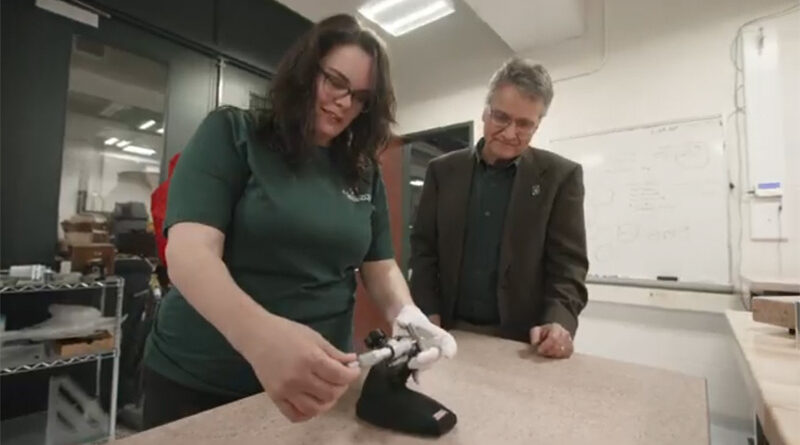Charlotte Leads The Field Of Metrology—The Science Of Measurement
By YEN DUONG
Look at one strand of your hair. Just one. Now, imagine the safety of your next airplane ride, the fuel efficiency of your car or the reliability of your cell phone were all dependent on something as small as 1/100th of the width of that strand of hair.
They are.
This tiny unit, the micron, and the study of measurements on this level, metrology, affect nearly every aspect of daily life.
For example, even minute deviations in the alignment of a car engine’s components can have significant effects on fuel efficiency.
For manufacturers in the western hemisphere, the Center for Precision Metrology at UNC Charlotte stands alone as the premier academic research center dedicated to delving into the impacts of these micro measurements.
CPM encompasses state-of-the-art instruments, world-class research talent and industry partnerships to work on the scale of microns. For example, regarding mechanical components, dimensional differences of just microns will extend through huge assemblies – such as wind turbines and spacecraft – and will dictate the success or failure of the product.
Yet, the risks of imprecise measurement extend beyond operational inefficiency — aesthetics matter, too. Imagine a vehicle with mismatched panels, each exhibiting slightly different colors or textures.
When you think of John Deere, what comes to mind? Green. The precise green that appears on all of the company’s products is achieved through precision metrology, which ensures all its product panels, from hood to fender, are the same recognizable shade.
“If a manufacturer bought parts from different suppliers, all using different processes, and then put them all together, they might have surfaces that look different,” said graduate student Jesse Redford, who has a job lined up at the National Institute of Standards and Technology.
Metrologists help manufacturers avoid this scenario by using surface metrology, which is like a forensic tool for the manufacturing process. Through metrology, the smallest physical details of the item, including the microscopic peaks and valleys of the surface topography, are measured and quantified.
In this way, metrologists help ensure tactile and visual consistency, or in other words, the smoothness and final color of the painted panel. In the John Deere example, all panels now have the same aesthetics and polished feel, which reinforces customers’ perception of quality.
Photos by Amy Hart & Ryan Honeyman

